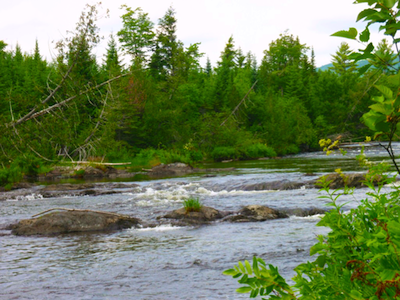Effects of Acid Rain on Atlantic Salmon Populations
- Page ID
- 222251
This module provides a real world context for introducing fundamental quantitative techniques (pH, Ion Selective Electrodes, Ion chromatography, and Titrimery) used in chemical analysis of water samples. Using active learning pedagogy, module explores sampling and analyzing the base inorganic ions and acidity parameters in freshwater samples. The module frames the study using the environmental impacts of acid rain on the habitat of the endangered Atlantic Salmon as a case study.
Wild Atlantic Salmon (Salmo Salar) in Maine, eastern Canada, and northern Europe are on the brink of extinction. The salmon populations segments in the northeast United States have either been extirpated or are now listed on the federal endangered species list. Rivers in Canada and Norway are heavily remediated to maintain minimal populations. Both freshwater and marine survival are low, and most populations are maintained only with a vigorous hatchery and stocking program. In order to make salmon populations self-sustaining, both freshwater and marine survival must be improved. During the past decade over 100,000 young salmon are stocked annually in a number of rivers with fewer than 100 returning as adults. In freshwater, water quality problems from a combination of related factors result in poor fish condition and low survival as they undergo the smoltification process while moving into salt water. Solving this complex problem requires both the approach and the tools used by analytical chemists. In the process of thinking about the problem, you will have the chance to apply knowledge you have gained in your chemistry coursework and to learn in greater detail important concepts related to modern chemical analysis, by developing a sampling plan, choosing an appropriate analytical method, and collecting and analyzing data.

Contributors and Attributions
- Dr. William Otto (University of Maine at Machias): william.otto@maine.edu. Content from ASDL.


